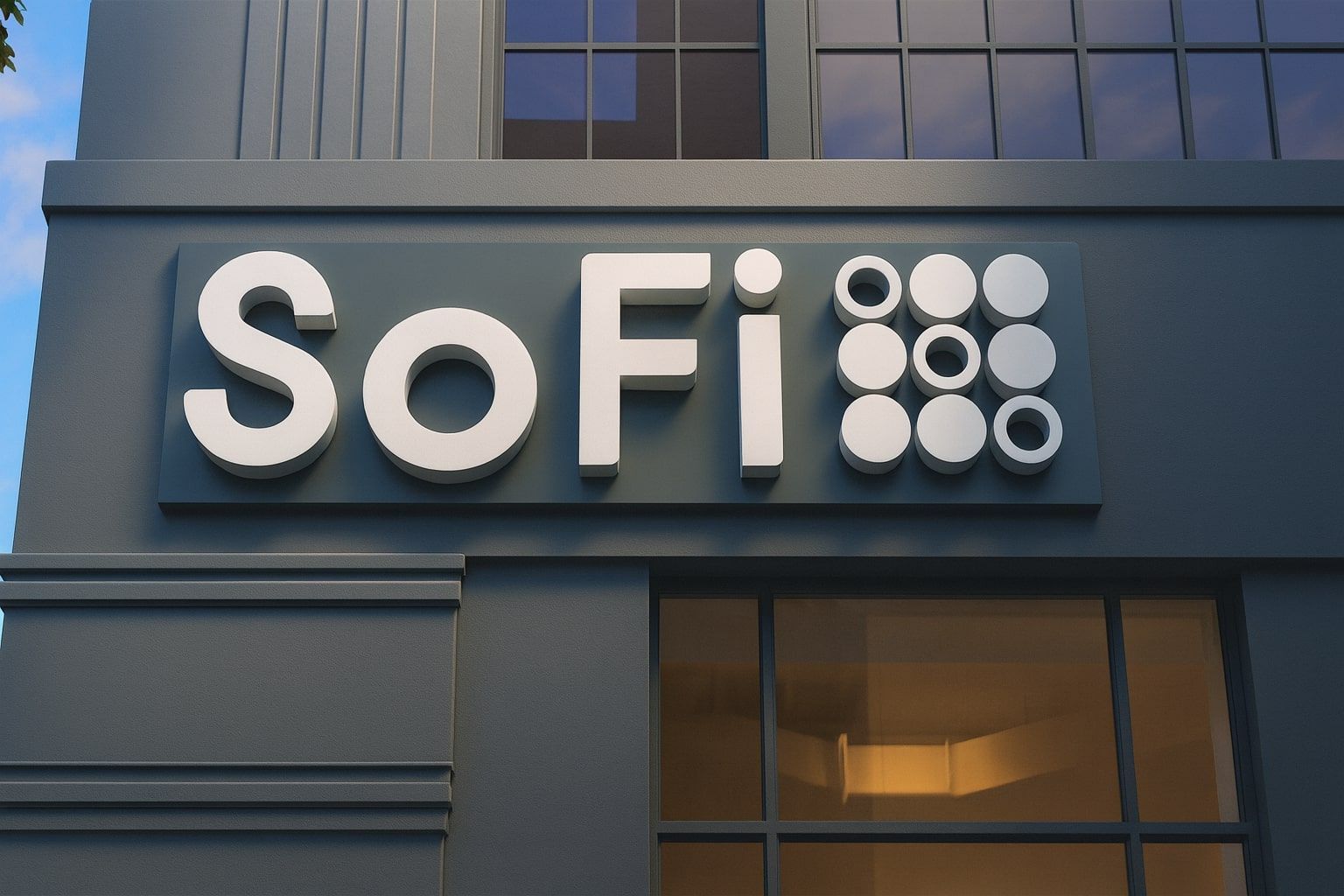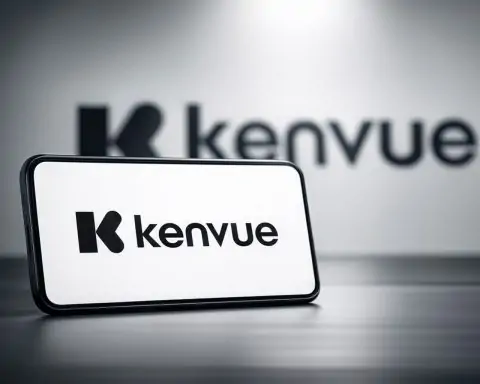SoFi Technologies (NASDAQ: SOFI) closed Friday, November 21, 2025 at $25.19 per share, capping a volatile week in which the popular fintech name slid roughly 10% even as its fundamentals remain strong and growth initiatives continue to stack up. [1]
The stock traded between roughly $23.5 and $25.5 during the session and saw heavy activity with around 90 million shares changing hands, close to its elevated recent average volume. [2] Even after the recent pullback, SOFI sits far above its 52‑week low of $8.60 and about 23% below its 52‑week high of $32.73, leaving the shares up roughly 60% over the past year. [3]
At the same time, SoFi just delivered record third‑quarter earnings, raised its full‑year 2025 outlook, relaunched its crypto business, and announced a series of new products and geographic expansions – while an insider sale by the firm’s chief risk officer on Friday added a fresh talking point for traders. [4]
This article breaks down SOFI’s price action today, the fundamental story behind the move, and what investors and traders will be watching heading into 2026.
SOFI stock price today: how SoFi traded on November 21, 2025
As of Friday’s close:
- Closing price: $25.19
- Intraday range: about $23.52 – $25.45 [5]
- 52‑week range:$8.60 – $32.73 [6]
- Market cap: around $30 billion [7]
- Recent trading volume: ~90 million shares, versus an already heavy average near 90 million [8]
Data from Quiver Quantitative show SOFI fell roughly 10% over the past week and ranked among the most‑searched tickers on the platform, underscoring how closely the name is being watched by retail and institutional traders alike. [9]
Technically, SOFI is now:
- Below its 50‑day moving average around $28,
- But comfortably above its 200‑day moving average near $22,
according to MarketBeat’s latest summary. [10]
That positioning – between a rising long‑term trend line and a declining short‑term average – is classic “consolidation after a big run,” and helps explain why sentiment feels mixed despite strong fundamentals.
The fundamental backdrop: SoFi’s record Q3 2025
Much of the bull case under SOFI’s 2025 rally rests on a standout third quarter, reported on October 28:
- GAAP net revenue:$961.6 million, up 38% year‑over‑year
- Adjusted net revenue:$949.6 million, also up 38%
- GAAP net income:$139.4 million, SoFi’s eighth straight profitable quarter
- Diluted EPS:$0.11, more than double the $0.05 posted a year earlier [11]
- Adjusted EBITDA:$276.9 million, up 49%, with an EBITDA margin of 29% [12]
Growth in SoFi’s key operating metrics has been similarly strong:
- Members: up 35% year‑on‑year to about 12.6 million, with a record 905,000 new members added in Q3
- Total products: up 36% to roughly 18.6 million, driven primarily by financial‑services offerings
- Loan originations: a record $9.9 billion in Q3, including
- ~$7.5B in personal loans,
- ~$1.5B in student loans, and
- nearly $945M in home loans. [13]
On the banking side:
- Net interest income rose 36% year‑over‑year.
- Net interest margin expanded to about 5.84%, reflecting the benefits of SoFi’s low‑cost deposit base.
- Total deposits climbed to $32.9 billion, with nearly 90% coming from direct‑deposit members, helping SoFi fund loans more cheaply than via the capital markets. [14]
Credit quality remains a key focus for investors in any lender. SoFi highlighted:
- Lower charge‑off rates on personal and student loans versus the prior quarter,
- 90‑day delinquencies broadly stable, and
- On‑balance‑sheet personal‑loan net charge‑offs at their lowest level in over two years. [15]
Put together, Q3 showed a company growing fast and remaining profitable while tightly managing credit – a combination that has historically been hard to achieve for high‑growth fintech lenders.
Raised 2025 guidance: management leans into growth
On the back of those results, SoFi significantly raised its full‑year 2025 guidance:
- Adjusted net revenue for 2025: now expected around $3.54 billion, implying growth of about 36% year‑over‑year. [16]
- Adjusted net income: guided to roughly $455 million, up from a prior target of $370 million.
- Adjusted EPS: lifted to about $0.37 vs. previous guidance of $0.31. [17]
- Member growth: SoFi now expects to add at least 3.5 million new members in 2025, up from a prior goal of 3 million. [18]
For shareholders, the message is clear: management believes the current growth and profitability trajectory is sustainable enough to warrant higher earnings targets, not just one‑off beats.
New growth levers: crypto, AI tools, and alternative investments
Beyond earnings, SoFi spent 2025 building what it hopes will be a durable ecosystem of products that keep members inside its “one‑stop‑shop” for years.
1. SoFi Crypto and blockchain payments
On November 11, SoFi Bank announced SoFi Crypto, becoming the first and only nationally chartered consumer bank to offer a fully regulated, in‑app crypto trading platform. [19]
Key points:
- Members can buy, sell, and hold a curated list of digital assets (including major coins like Bitcoin and Ethereum) directly in the SoFi app.
- SoFi also launched blockchain‑based international remittances via SoFi Pay, aiming for faster and cheaper cross‑border transfers. [20]
- The company plans to launch a USD‑pegged stablecoin by the end of 2025, positioning itself at the intersection of mainstream banking and programmable money. [21]
For investors, the crypto relaunch underscores SoFi’s willingness to differentiate itself from traditional banks – but also introduces additional regulatory and reputation risk, should the digital‑asset market face renewed volatility or tighter rules.
2. AI‑powered financial tools
SoFi has also leaned hard into AI, rolling out features such as Cash Coach, an AI‑powered tool designed to help members optimize their spending and savings across accounts. Management credits these features, along with SoFi Plus rewards and other UX upgrades, with driving higher cross‑buy rates, where about 40% of new products in Q3 were opened by existing members. [22]
Those engagement metrics are important for valuation: the more SoFi can deepen relationships with existing members, the more it can spread marketing costs across multiple products and lift lifetime value per customer.
3. Private‑market funds with exposure to OpenAI and SpaceX
In mid‑2025, SoFi launched new private‑market funds that give individual investors access to high‑profile startups such as OpenAI and SpaceX, with investment minimums as low as $10 – a stark contrast to prior funds that required $25,000 or more. [23]
By partnering with asset managers like Cashmere, Fundrise, and Liberty Street Advisors, SoFi is trying to:
- Differentiate its investing offering,
- Tap into retail demand for AI and space‑tech exposure, and
- Strengthen its brand among younger, growth‑oriented investors.
4. Geographic expansion: new hub in Charlotte
SoFi is also investing in its physical footprint. The company is expanding operations in Charlotte’s Ballantyne district, backed by a Job Development Investment Grant that could contribute nearly $1 billion to North Carolina’s economy over 12 years. [24]
The new hub will host roles ranging from loan officers and underwriters to analysts and management, strengthening SoFi’s presence in a key U.S. financial center and potentially helping control costs as the business scales.
Insider sale on November 21: red flag or routine?
Friday’s headlines also featured an insider sale:
- Who sold? Arun Pinto, SoFi’s Chief Risk Officer
- What was sold?46,132 shares of SOFI
- Average sale price: about $24.76 per share
- Total proceeds: roughly $1.14 million
- Remaining holdings: around 138,396 shares, meaning he sold about 25% of his stake. [25]
Crucially, filings indicate the sale was made under a pre‑arranged Rule 10b5‑1 trading plan adopted in June 2025 – a standard mechanism executives use to diversify or manage liquidity without being accused of trading on non‑public information. [26]
How should investors interpret this?
- Neutral to mildly negative headline: Large insider sales can spook short‑term traders, especially after a big run‑up.
- But context matters:
- The sale was pre‑planned months in advance.
- Pinto still holds a substantial stake, keeping his incentives aligned with shareholders.
In other words, this looks more like profit‑taking after a strong year than a vote of no confidence – but it adds to the narrative that some insiders see current levels as an opportunity to lock in gains.
How Wall Street sees SOFI now
Analysts remain cautious but intrigued by SoFi’s growth story.
- Data compiled by 24/7 Wall St. show a Wall Street 12‑month price target around $26.61, only about 7% above Friday’s close, and note that just 6 of 22 analysts rate the stock a Buy. [27]
- MarketBeat puts the average price target closer to $25.06, essentially in line with the current price, and describes the consensus rating as “Hold” with a mix of Buy, Hold, and Sell recommendations. [28]
Valuation is a big part of that caution:
- SoFi’s price‑to‑earnings ratio sits in the mid‑40s on a trailing basis – rich compared with many traditional consumer lenders – even after this week’s pullback. [29]
- Earlier in 2025, KBW notably downgraded SOFI to “underperform” citing stretched valuation and ambitious long‑term return targets, highlighting the risk that expectations could outrun fundamentals. [30]
At the same time, coverage on Nasdaq.com recently described SoFi’s 2025 performance as “incredible” and argued that the company has now proven itself a serious long‑term player in consumer finance, even as it urged investors to temper expectations for 2026 after such a strong run. [31]
Net‑net, the Street seems to agree on two things:
- The business momentum is very real.
- A lot of that good news is already reflected in the share price.
Technical levels and scenarios traders are watching
Without a chart, the key numbers traders are focused on are fairly straightforward:
- Support zone: The $22–23 area, close to SoFi’s 200‑day moving average, is a logical first support region. A decisive break below could signal a deeper reset after 2025’s big move. [32]
- Near‑term resistance: The 50‑day moving average near $28 is likely the first ceiling bulls need to reclaim to re‑establish momentum. [33]
- Major resistance: The 52‑week high around $32.73 is the obvious longer‑term hurdle; reclaiming and holding above it would suggest the market is prepared to pay up for SoFi’s 2026–2027 earnings potential. [34]
Three broad scenarios often discussed by traders:
- Bullish continuation:
- Macro conditions remain supportive, credit performance stays strong, and SoFi executes on crypto, AI, and alt‑investment initiatives.
- In this case, the stock could attempt another run toward the low‑30s over time as earnings catch up with valuation.
- Sideways consolidation:
- Growth remains solid but not spectacular, and valuation worries cap upside.
- SOFI chops in a wide band (for example, low‑20s to high‑20s) while earnings and book value grow into the current price.
- Bearish reset:
- A weaker consumer environment, rising delinquencies, regulatory setbacks in crypto, or a rerating of high‑growth fintech could send the stock back toward the high‑teens.
- Under this path, bulls would likely focus on long‑term franchise value and balance‑sheet strength, while short‑term sentiment sours.
None of these paths is predetermined; they simply frame how investors are thinking about risk/reward at today’s levels.
Key risks to watch
Even supporters of SOFI stock point to several non‑trivial risks:
- Credit-cycle risk: SoFi’s lending engine is humming, but a recession or sharp rise in unemployment could pressure personal‑loan and student‑loan performance despite today’s healthy metrics. [35]
- Regulatory and crypto risk: Being the first nationally chartered bank in consumer crypto trading is a double‑edged sword; changing rules around stablecoins, KYC/AML, or capital treatment could add costs or limit growth. [36]
- Competitive pressure: SoFi competes with big banks, brokerages, and other fintechs in everything from deposits to brokerage to personal loans. Sustaining rapid growth while maintaining spreads and fees may get harder as rivals respond. [37]
- Execution risk in new products: Private‑market funds, AI tools, and crypto services could deepen loyalty – or disappoint members if performance or user experience falls short. [38]
For a stock that still trades at a premium multiple, any stumble in these areas can hit the share price quickly.
Bottom line on SOFI stock today
As of November 21, 2025, SOFI stock is in an interesting spot:
- The business is hitting record highs in revenue, profitability, members, and products.
- Management has raised guidance and is investing aggressively in crypto, AI, and alternative investments – bets that could pay off over the next several years.
- The share price, while off recent highs, still embeds high expectations, with valuation metrics well above traditional lenders and a Street consensus that is more “prove it” than “pounding the table.”
For long‑term investors, the key questions are whether SoFi can:
- Sustain strong growth without compromising credit quality,
- Convert its expanding product suite into durable, high‑margin cross‑selling, and
- Navigate evolving regulation in crypto and banking while maintaining its innovative edge.
For short‑term traders, Friday’s insider sale, heavy weekly drop, and the gap between price and the 50‑day moving average will likely drive the near‑term playbook.
Important: This article is for informational and educational purposes only and does not constitute financial advice, investment recommendation, or an offer to buy or sell any security. Always do your own research and consider speaking with a qualified financial professional before making investment decisions.
References
1. www.macrotrends.net, 2. www.morningstar.com, 3. www.investing.com, 4. investors.sofi.com, 5. www.morningstar.com, 6. www.macrotrends.net, 7. www.tradingview.com, 8. www.investing.com, 9. www.quiverquant.com, 10. www.marketbeat.com, 11. investors.sofi.com, 12. investors.sofi.com, 13. investors.sofi.com, 14. investors.sofi.com, 15. investors.sofi.com, 16. www.wsj.com, 17. investors.sofi.com, 18. www.wsj.com, 19. investors.sofi.com, 20. investors.sofi.com, 21. www.barrons.com, 22. investors.sofi.com, 23. www.investopedia.com, 24. www.axios.com, 25. www.investing.com, 26. www.investing.com, 27. 247wallst.com, 28. www.marketbeat.com, 29. www.tradingview.com, 30. www.reuters.com, 31. www.nasdaq.com, 32. www.marketbeat.com, 33. www.marketbeat.com, 34. www.macrotrends.net, 35. investors.sofi.com, 36. investors.sofi.com, 37. en.wikipedia.org, 38. www.investopedia.com







